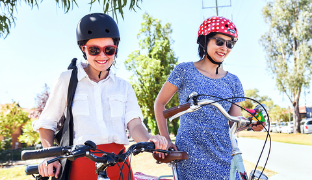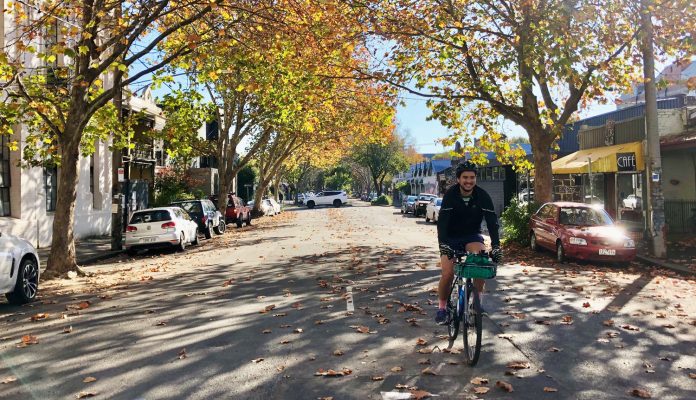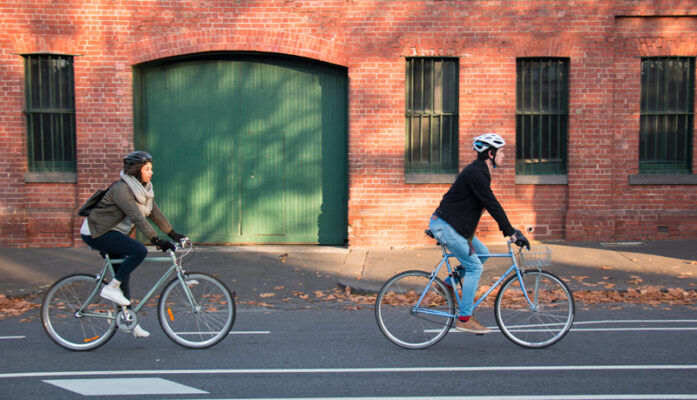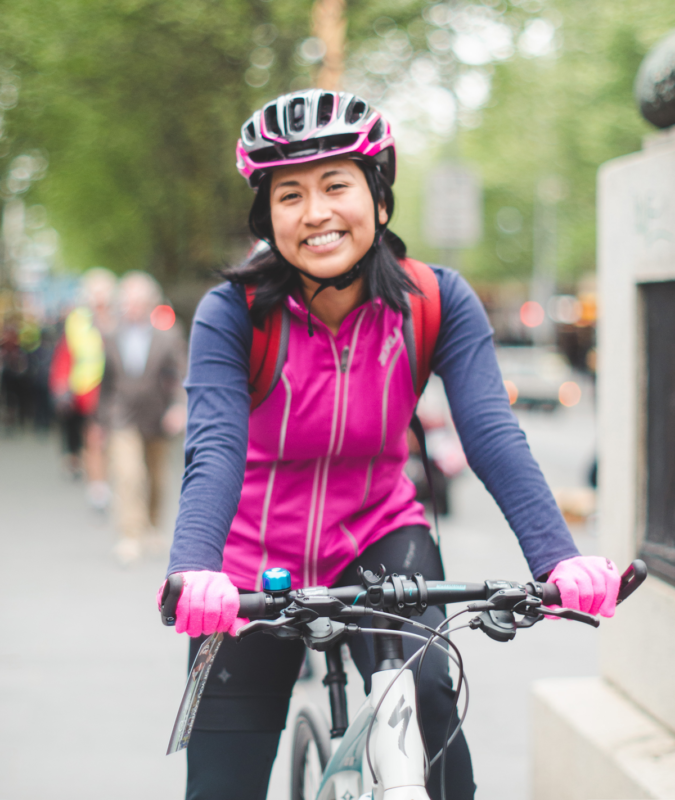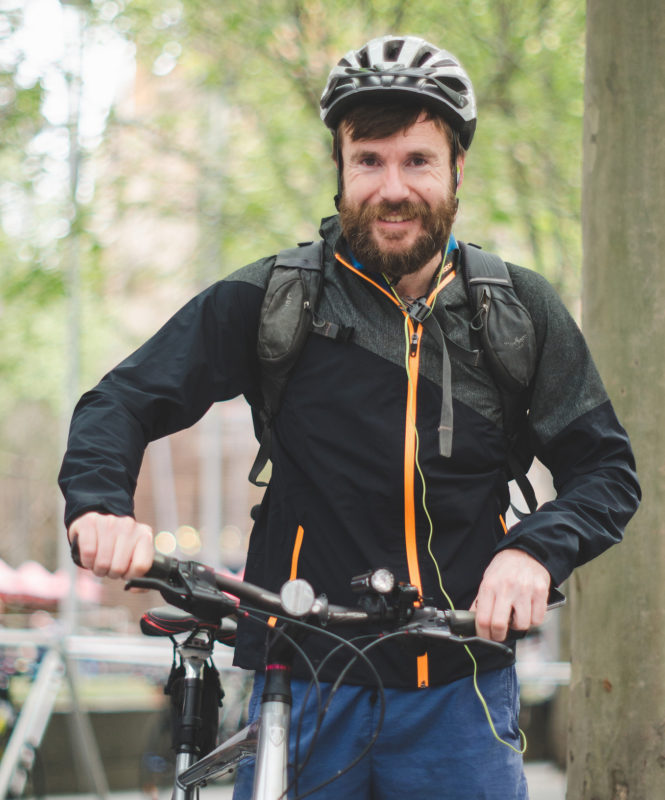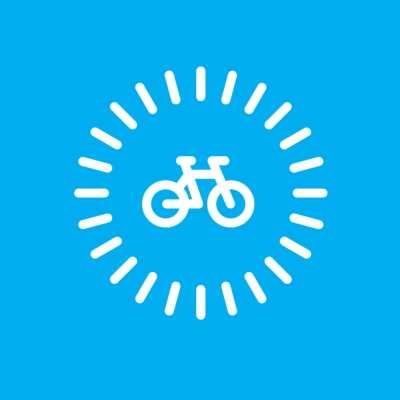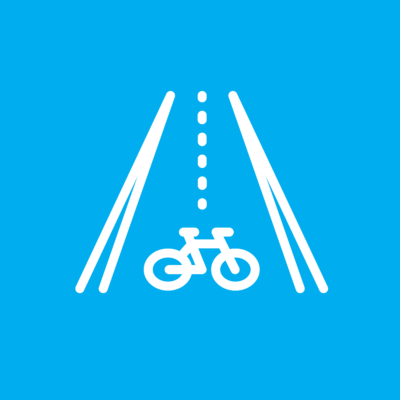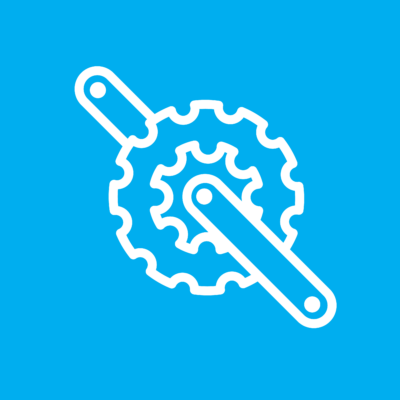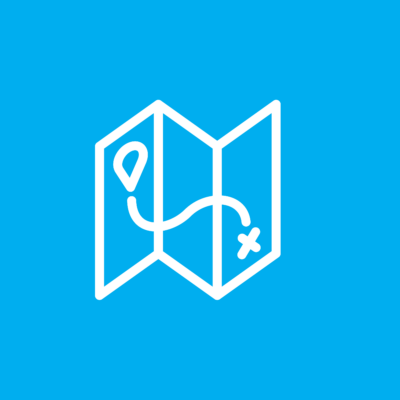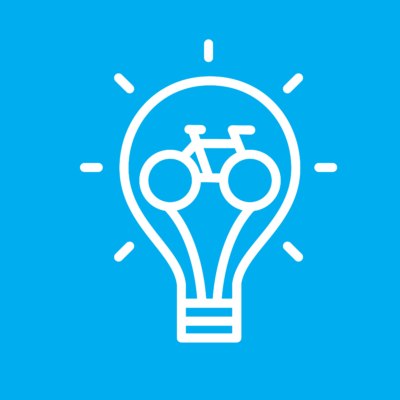Ride2Work
Getting started
Tips for new riders
Are you new to riding? Here are the answers to the most frequently asked questions about riding a bike to work.
Riding to work is not a race — take it easy and use the gears. Your fitness and health will build over time. Long-term health benefits include increased strength, improved muscle tone, decreased body fat and reduced risk of disease.
You need a bike (new or old), a helmet and a good lock. You’ll also need front and rear lights, and a rear red reflector to be visible in dark conditions. A well fitted bike is a dream to ride, so get the size and seat height right. Serviceable brakes, tyres and chain save worry and trouble. Ask your local bike shop for advice and possibly a bike service. Note that bicycles must have at least one effective brake and a working bell.
If you’re travelling light, try a backpack, courier-style bag or bike basket. Panniers (bags that can be fastened to a rack) are great for larger loads. Bike trailers or cargo bikes can be considered to drop the kids off or carry heavy work materials.
Bike-friendly workplaces have huge benefits to both employees and employers from improving physical health to productivity.
Our bike parking experts have over 20 years experience and can help install bike parking and post-ride facilities in your workplace.
Bikes are generally faster than cars or public transport in the congested peak travel times if your trip is less than 15 kilometres. You’ve also done your exercise for the day so you don’t need to find time to go to the gym.
Wear clothes that are unrestrictive, light, warm and dry quickly. Wear bright and light coloured clothing and something reflective. You can ride in work clothes or change at work. You can carry a fresh change of clothes with you or bring them in once a week by public transport or car. Ask other riders in your workplace about facilities for changing, showering and storing clothes.
Tip: Reflective ankle bands are a great idea to stop your trousers from getting caught and gloves are essential in the colder months.
Start by speaking to regular riders and checking out maps available from your state/territory cycling organisation or local council. Aim for a route that avoids traffic and narrow roads.
You might be able to utilise off-road bike paths and on-road bicycle lanes. Someone who rides in from your direction might be happy to show you the ropes. Consider doing a trial ride on a weekend.
Part way is OK. Jump on the train with your bike in the morning, and get off at a reasonable distance from work and then ride. Perhaps drive in part of the way and ride from there. Riding to the train station is a great idea. Some people reduce the distance per day by riding only one way each day.
Wear a rain jacket, preferably with underarm vents and reflective or bright panels. Take a change of clothes for your legs or wear waterproof overpants. Exercise extra caution, just like when you drive a car in the wet. Avoid metal surfaces such as tram tracks and drains. If it rains at the end of the day and you’d rather not ride, leave your bike at work and ride home the next night or take your bike home by train.
Always keep in mind the ‘three Cs’ when cycling in traffic:
- Common sense: Bicycles are recognised as vehicles and must follow the rules of the road. Riding on the left, obeying traffic signals and using hand signals before turning right are all essential for reducing risk.
- Courtesy: Be assertive but considerate by knowing the road rules and acting on them. If you make eye contact with motorists you can be more confident that they’ve seen you.
- Caution: Find a low risk route – try quieter streets or off-road bike paths. Ride predictably and leave yourself room to manoeuvre. Try to be aware of what’s happening around you and look ahead. Watch for opening car doors. If possible, ride out from the door zone – a car door is about 1.5m wide. If you can’t do this, then slow down to a speed where you can stop in time.
Modern puncture-resistant tyres are so good you can ride enormous distances without a flat. If you do get a puncture and you’re carrying a basic repair kit, you can replace the tube or repair the old one quite quickly on the spot.
If you haven’t learned how to repair or replace a tube, devise an action plan. This might involve carrying a mobile phone or knowing where the nearest train station or bike shop is located. See our Tips & Resources for more information on bike maintenance and mobile mechanics.


